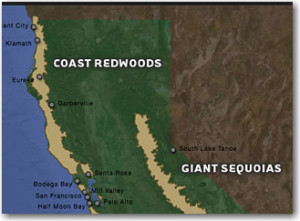Do you have an albatross? That task you don’t want to do, conversation you don’t want to have, meeting you don’t want to run? How do you handle it? Grab it by the horns, ask someone else to do it, or just avoid it altogether?
Let me digress…
In June, my husband and I traveled with friends for two weeks in France: Paris > Giverny > Rouen > Honfleur > Bayeaux > Normandy > Mont-Saint-Michel > Amboise > Loire Valley > Nice > Monaco
After powering through four days in Paris on our feet, my husband and one of our friends left the hotel and returned with our rented Renault Trafic Combi.
You’d think we were traveling with 8+ people, since the Combi is a 9-passenger van. No, our party totaled five. But two of those five pack like they’re crossing the Atlantic on a 1920s ocean liner. One of them showed up in my driveway for a 4-day weekend to Nantucket with a steamer trunk; she likes “options”. Another brings an extra suitcase because he refuses to repeat outfits in his selfies and needs to buy large, heavy souvenirs.
So immediately after renting a 7-passenger van online a few weeks before departure, I panicked and changed it to a 9-passenger bus.
I texted everyone, asking if the size was OK even if it wasn’t as nice as the smaller van.
“Yes, better to have enough room,” they all said.
I asked if the difference in price was OK.
“It’s nothing when divided by five of us,” they all reasoned.
I asked who wanted to be the official driver.
“Not it,” four of us echoed.
So, my husband was elected designated driver. In France, the steering wheel is on the left side of the car. They drive on the right side of the road. What’s the problem?
My husband championed through finding the hidden rental car location, accepted the four pages of things the agent explained were wrong with the van – “Bonne chance!” (“Good luck!”), figured out the GPS directions even when it pronounced things like the “Chaaamps EL-ISS-esss”, maneuvered his way out of an underground garage we had no business pulling into, snaked our way through 2-lane switchback roads wide enough for one Smart car (did I mention it was a manual shift, diesel?), and shared the road with French drivers who do not believe rules or laws are needed.
He was fine with all of this. What he wasn’t fine with was our route out of Paris. Two days before we left the city, we visited the Arc de Triomphe. We marveled at the memorial and climbed 200+ steps to the top, where the views were incredible and the cars below us looked like hundreds of pie pieces moving around a Trivial Pursuit board. It was there that my husband told me we would not be driving around that to exit the City of Lights (aka the City of Crazy Drivers).
We climbed into the van (the luggage fit!), the GPS instructed us where to go, and we tried to stay away from the Champs-Élysées and its landmark arc based on some careful map studying the night before. But as luck would have it, traffic and the GPS snuck us around some buildings, and suddenly, we were on the Champs-Élysées heading for the mother of all rotaries.
Or roundabouts as they call them over there.
“The ONE thing I didn’t want to happen… is happening!” he moaned.
I didn’t see the big deal. It’s a rotary. It’s meant to be driven around. Hundreds if not thousands of vehicles go around it every day. But it was his albatross. I had to be empathetic and supportive.
Naturally I whipped out my iPhone and started recording.
So I won’t win Wife of the Year. Cars were whipping by. Pedestrian tourists risked their lives. A motorcycle cut off a Porsche which stopped directly in front of us and we slammed to a halt. We had four back seat drivers, simultaneously trying to help while at the same time laughing, praying, providing commentary, and waving to the camera.
My husband started breaking down his mountain. “We’re bigger than everyone else on the road. Looks like we go straight – in at 6, around, and out at noon. This thing has so many dings, scratches, and missing pieces, what’s one more?”
We obviously made it through, unscathed even. And it turned out to be one of the most memorable stories of the trip.
Sometimes we make that albatross bigger than it is. Try grabbing the wheel and driving through your own Arc de Triomphe!












